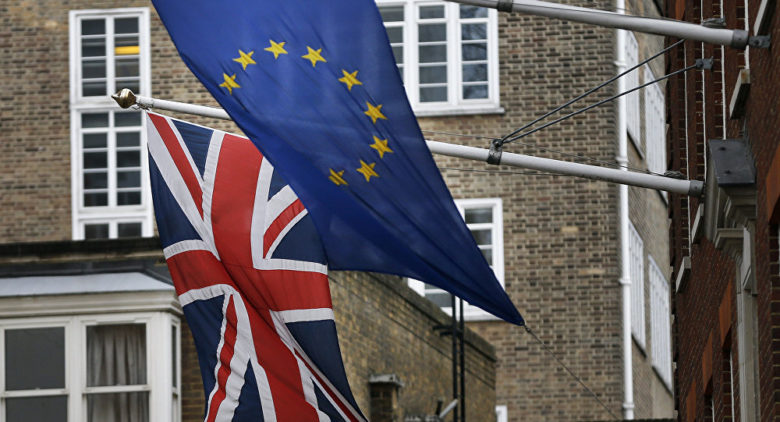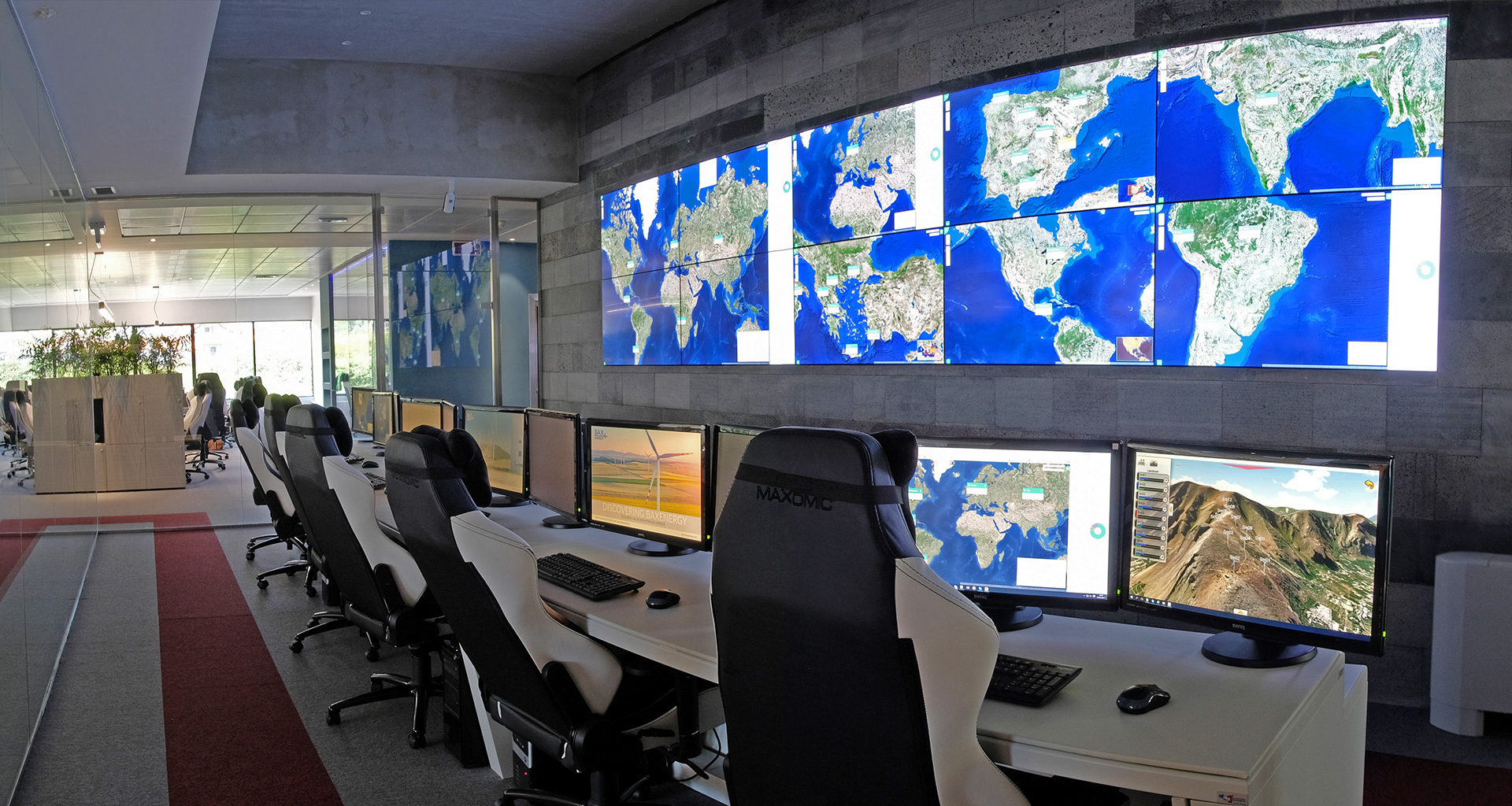“The harshness of a photograph is the best way to denounce the most serious events of reality and make it change, but it is always important to respect people”
In the age of instagram, and smartphones always at hand, lots of pictures go around and run the risk of losing their value. So what is the role of a photojournalist in such a context? We all remember the sadly famous picture of Aylan, the lifeless child in a red t-shirt on a Turkish shore; it shocked us and forced us to open our eyes to the problem of migration, a humanitarian crisis and not simple statistics. Is it possible that a picture may allow us to “stay human”, maybe through the tales of what Italian sailors do on a daily basis? The work of Catania-born photojournalist Antonio Parrinello, an esteemed contributor to Reuters press agency, seems to confirm this. “A photojournalist’s shot must depict reality, be a piece of news in itself. While in the world of art every picture is the product of subjectivity and an expression of interiority, in my job the only element of subjectivity lies in the point of view from which I choose to take the picture. In order to find the right one, it may be necessary to spend weeks aboard a navy ship”.
FROM FILM TO DIGITAL. Antonio Parrinello’s career started in the 1990’s with shots covering news and society for local newspaper “La Sicilia”. Back then, cameras still needed film, and the shooting process was not as fast as it is today. Regarding this Parrinello says: “digital photography has helped a lot, it made shooting times a lot quicker and enables shooting also with poor lighting. It is no longer necessary to wait and develop films and you no longer have a limited number of poses. This does not mean, however, that the way in which you take pictures has changed. You still need to be technically perfect and avoid modifying images using new technologies, just like you would have done in the past”.
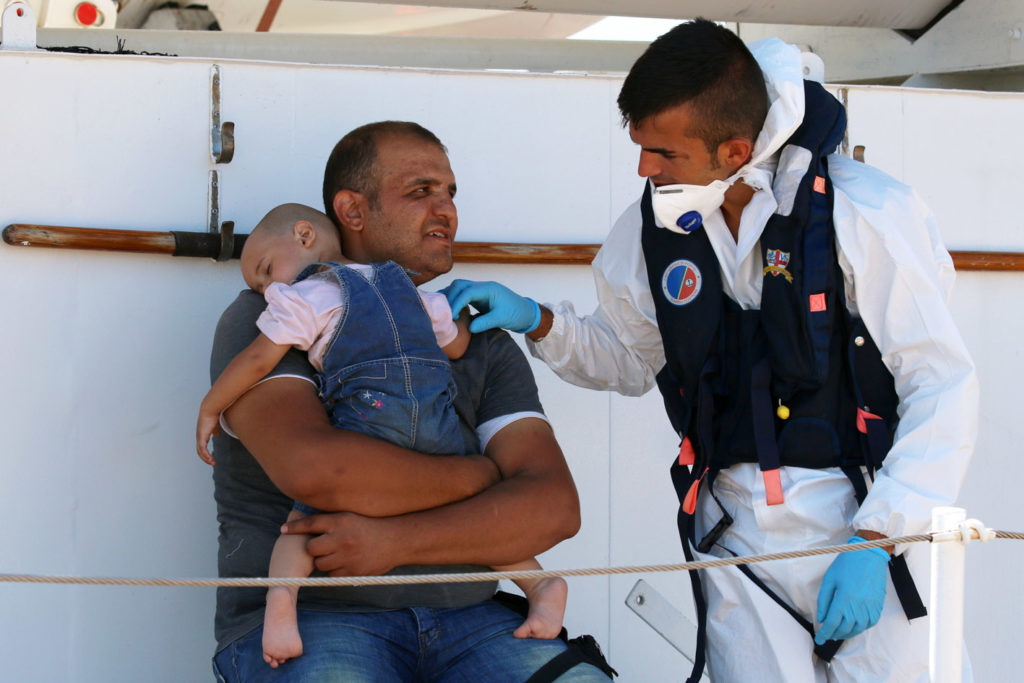
Photo Antonio Parrinello / Reuters
SUCCESS. Ability and passion have allowed Parrinello to see his shots published in national and international publications such as “Time” and be part of important exhibitions e.g. “Etna Patrimonio Unesco” in 2013. Thanks to his television and cinema studies which he carried out in Rome, Parrinello has worked as a cinematographer on many sets and was director of photography on numerous productions. Today, however, he is mostly renowned for his interest in the immigration crisis, an interest which started before it became a global issue. “When you denounce such a serious situation, it is important to have the right sensitivity and to always respect the dignity of such desperate people.” This is how one of his most appreciated shots “the giant and the baby girl” came to being. In this picture he eternalises a Syrian man escaping war with, in his arms, the baby girl he saved.
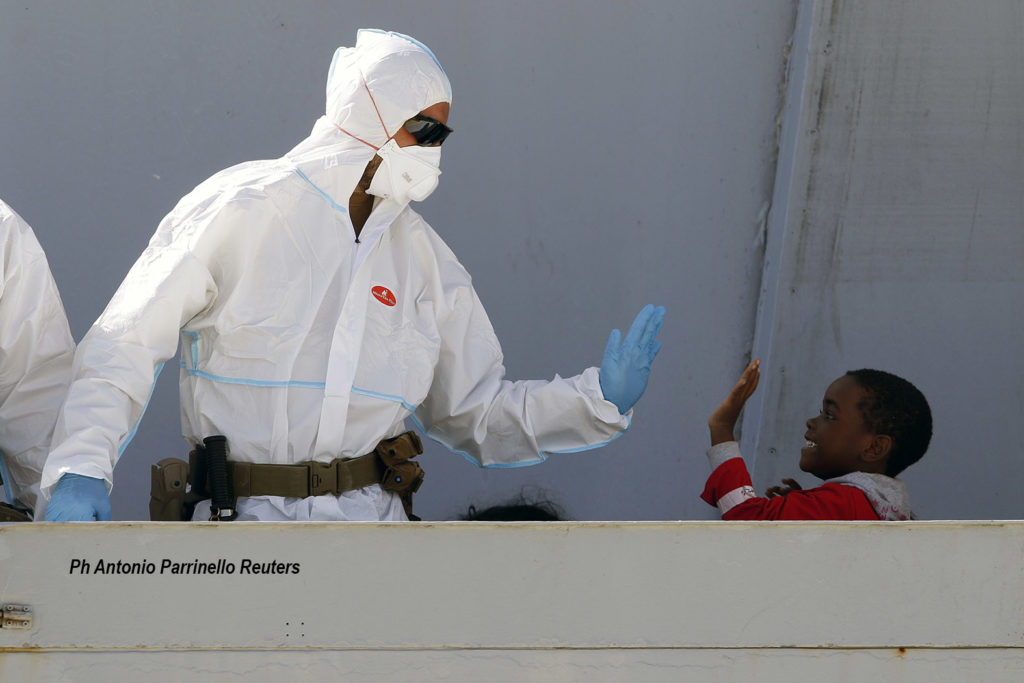
Photo Antonio Parrinello / Reuters
REUTERS. For a few years now, Antonio Parrinello has been contributing to REUTERS. A Pulitzer prize award winning British press agency, awarded for its commitment to describing the migration crisis in the Mediterranean sea. “These shots have to have international value and it is not easy. Among the most meaningful are the ones showing the migrants coming to land, when the misery and desperation from which they run away are more evident. Quite often the most meaningful ones come from Greece and Turkey, where these people touch land with no one to help them, while in Italy they are usually escorted by Navy ships”. However, Parrinello’s perspective is different and more dignified; it shows the moment the migrants receive help on land, such as the picture of a migrant child and a sailor giving each other a high five. It became a symbol of rescue operations led by the Italian navy and it does not offend the dignity of desperate people while shining a light on the seriousness of the issue. These kinds of pictures will become part of our collective memory in the same way that painful pictures from WWII already have.
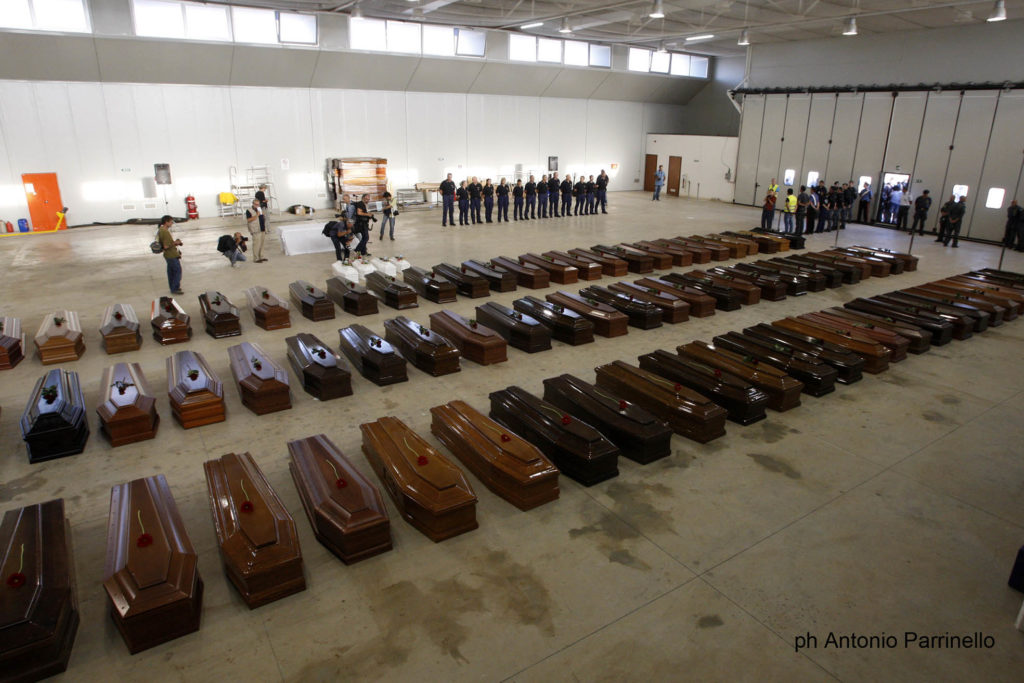
Photo Antonio Parrinello / Reuters


